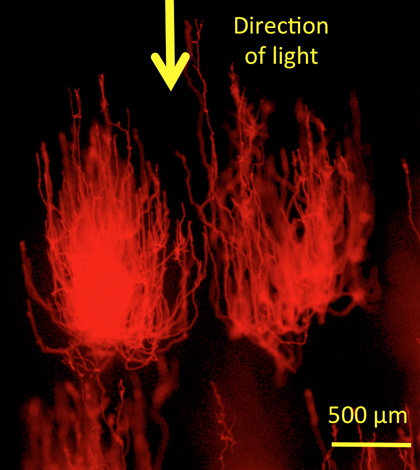Hot-spring cyanobacteria use unusual source for photosynthesis

The image shows that the sampled cyanobacteria cells grow toward the light when light is provided only from above. (Credit: Igor I. Brown, a research fellow at NASA JSC)
Scientists have discovered that cyanobacteria in dim areas are using a process they call “Far-Red Light Photoacclimation” for creating energy and oxygen, according to a Penn State University release.
The researchers collected samples from LaDuke hot spring near Yellowstone National Park in Montana. The cyanobacteria there manipulated proteins in their light processing systems while making new pigments to absorb far-red light, which is invisible to humans.
The researchers hope to use their discovery as the basis for further consideration in gathering the sun’s energy and optimizing plant growth.
Image: The image shows that the sampled cyanobacteria cells grow toward the light when light is provided only from above. (Credit: Igor I. Brown, a research fellow at NASA JSC)





0 comments